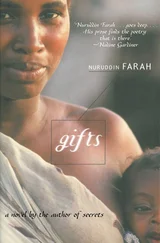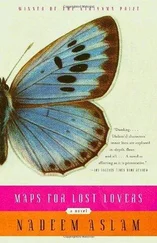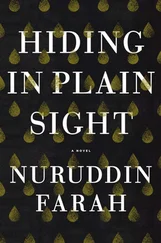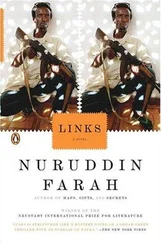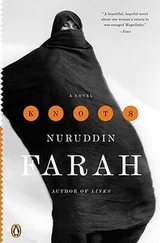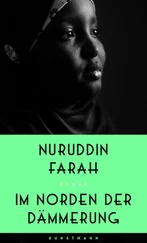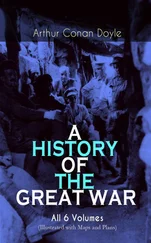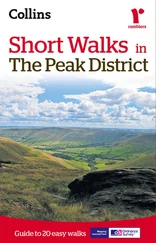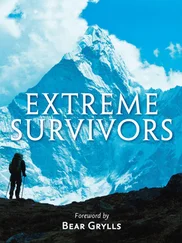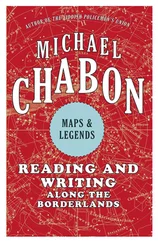The sea wore its blue gown. The sky had no hiatus. There were clouds in the heavens. And the moon was reflected in the water. And so was our shadow — Misra’s and mine — as we embraced.
No, I do not remember anything else!
I remember no flood!
I recall nothing else either!
 II
II
The following morning, I awoke and there was a taste of blood in my mouth. I found it odd that, although my tongue scoured the area surrounding the palate and the floor of the mouth, I could not account for it. Had I drunk drunk blood when asleep? I brushed my teeth a ramber of times. My saliva was as clear as sperm. I sensed no pain anywhere in my mouth. I confess it caused me some concern. And I couldn’t help recalling the day I “menstruated”. But what could the reason be?
I was torn between sharing the secret with Uncle Hilaal and Salaado and a wish to keep it all to myself, since I didn’t tell it to Misra the first time this happened in Kallafo. I decided to make myself busy so I would occupy my thoughts with grander notions and I began to redraw my map of the Horn of Africa. (In my map, the Ogaden was always an integral part of Somalia.) Anyway, no sooner had I completed the first draft than I heard a knock on the door and I answered, “Please come in. It is open.” Uncle Hilaal entered, holding in his tight grip a teacup he had brought for me.
“Good morning,” he greeted.
I said, “Good morning,” and thanked him for the tea.
My uncle stared at the map for a long, long time, piercing it with his severe concentration. I wondered if he did so because he noticed that my map didn’t have a generic name, but a specific categorization, in that I had scribbled not “The Ogaden” but simply “Western Somalia”, thereby, in a sense, making The Ogaden lose its specific identity, only to gain one of a generic kind. I was surprised that his imagination had taken him to a destination very different from the one I had considered. He said, “Tell me, Askar. Do you find truth in the maps you draw?”
My mind became the blotted paper one had covered worthless writings with, but it took me nowhere, it mapped nothing, indicating no pathway to follow. I repeated the question aloud to myself as if to be sure, “Do I find truth in the maps I draw?” and waited to see if the coarse ink on the blotted brain would dry, and if I would be able to visualize a clearer image, of which I could make better sense myself. All I could see was a beam of dust the sun had stirred nearer the window. I remained silent.
Uncle Hilaal clarified his point more. “Do you carve out of your soul the invented truth of the maps you draw? Or does the daily truth match, for you, the reality you draw and the maps others draw?”
Now, I walked the pathways of my thoughts cautiously. I was an old man negotiating with his feet (he was nearly blind — longsighted as well as shortsighted — you may as well ask, how can that be? but he was!) the hazardous, slippery staircase of a condemned building. ancient as himself. I was sure everything would collapse on my head before long. With the confidence of one who’s regained possession of a mislaid identity: “Sometimes,’ I began to say, “I identify ^2 truth in the maps which I draw. When I identify this truth, I label it as such, pickle it as though I were to share it with you, and Salaado. I hope, as dreamers do, that the dreamt dream will match the dreamt reality — that is, the invented truth of one’s imagination. My maps invent nothing. They copy a given reality, they map out the roads a dreamer has walked, they identify a notional truth.”
Either he was dissatisfied with my reaction to his question or he didn’t understand it. After he had allowed me time to take a sip of the tea he had just brought in for me, he said, “The question is, does truth change?”
“Or do we? Do we, men and women and children, change? Or does truth?”
He said, coming closer, “Better still, who or what is more important: the truth or its finder? You look at a map, of the British colonies in Africa, say, a map whose pinkish portions competed in terms of size and imagination with the green which represented the portions of the continent under the French. Now compare the situation today with its ghostly past and someone may think that a great deal of change has taken place and that names of a number of countries have been altered to accommodate the nationalist wishes of the people of these areas. But has the more basic truth undergone a change? Or have we?”
In the meantime, I picked up an old atlas: Somalia Italiana, British Somaliland, French Somaliland, the Northern Frontier District (which was then a protectorate, administered separately from the rest of Kenya) and a larger Ogaden. And I remembered seeing a map a German cartographer had drawn as his country invaded and conquered more and more of Europe. In my mind, I compared this “temporary truth” of the German’s redrawn map with Somalia’s remapping the Ogaden as an integral part of the Republic when it held it for a few months. I compared them as “truths”, not as analogous points of rationalization. For in my view, there was a substantial difference — the Germans had no “truthful” right to reassign territories, redesign maps just because they overran these lands and subjected the inhabitants to their tyrannical regimentation, but I believed the Somalis had a “truthful” right to the Ogaden and, in a “just” world, wouldn’t have had to reconquer it.
Uncle Hilaal asked if I had heard of the name of Arno Peters? And of Eduard Kremer?
I said I had.
“And did you know that Eduard Kremer, who was the drawer of the 1567 map, introduced numerous distortions, thereby altering our notion of the world and its size, did you? Africa, in Kremer’s map, is smaller than Greenland. These maps, which bear in mind the European’s prejudices, are the maps we used at school when I was young and, I am afraid to say, are still being reprinted year after year and used in schools in Africa. Arno Peters’s map, drawn four hundred years later, gives more accurate proportions of the continents: Europe is smaller, Africa larger.”
He had laid his finger on the map, tracing the African continent’s projections from its Cape Guardafui in the Somali Peninsula down to the raped Cape in the South, up to North Africa, which once formed part of a Mediterranean world of values. The “truth” was, I thought to myself, that Africa had little or no place in the anciently mapped thoughts of a mini-world. And what was he doing? He was staring at the map and then at me. And I saw in his stare an ambivalence of a kind I had difficulty interpreting. His finger, however, lay on the Somali Peninsula — his finger, skeletal, feeble and without energy
Then he spoke at length and gave me a richer background, addressing himself to the Mercator projections of the world map and the image the cartographers imprinted on the imagination of billions of school-going populations anywhere in the world. He added, “There is truth in maps. The Ogaden, as Somali, is truth. To the Ethiopian map-maker, the Ogaden, as Somali, is untruth.”
Silence. My stare presently dwelled on the cup of tea, whose brim was mapped with a whiter, unskimmed milk, which, to both of us, indicated its undrinkability. As he took it away, he stopped, like one who just then remembered why he had come in the first place. He massaged his forehead and finally spoke. “1 meant to ask you if you wanted to come with me because I am calling on Misra. Do you?”
I thought for a minute or two. “Give me five minutes,” I said.
“You have ten,” he said.
 III
III
Читать дальше
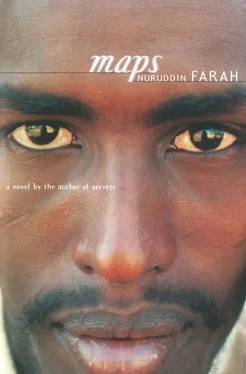
 II
II